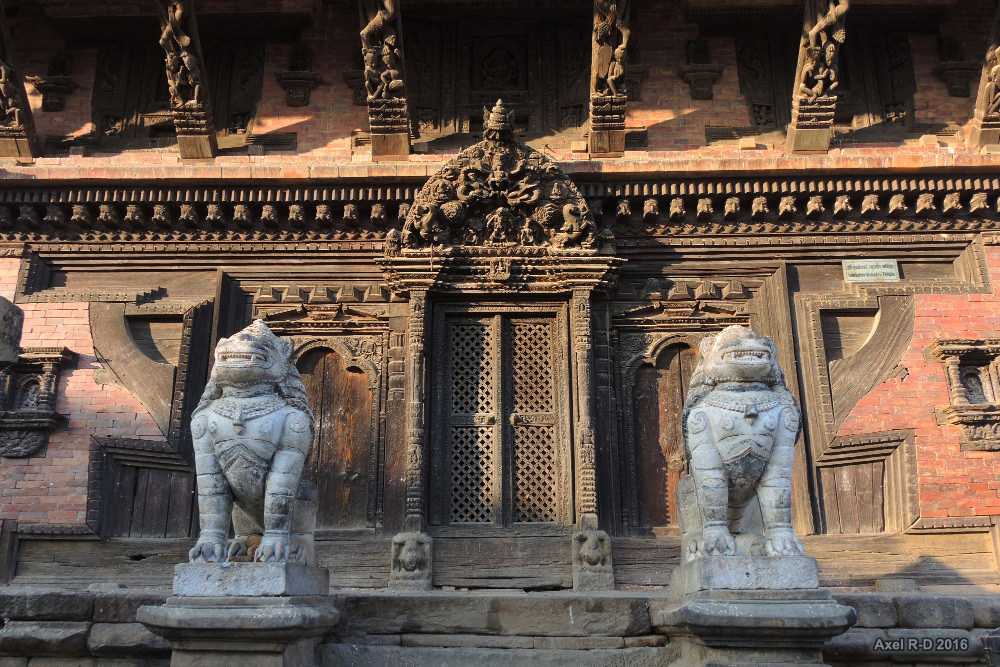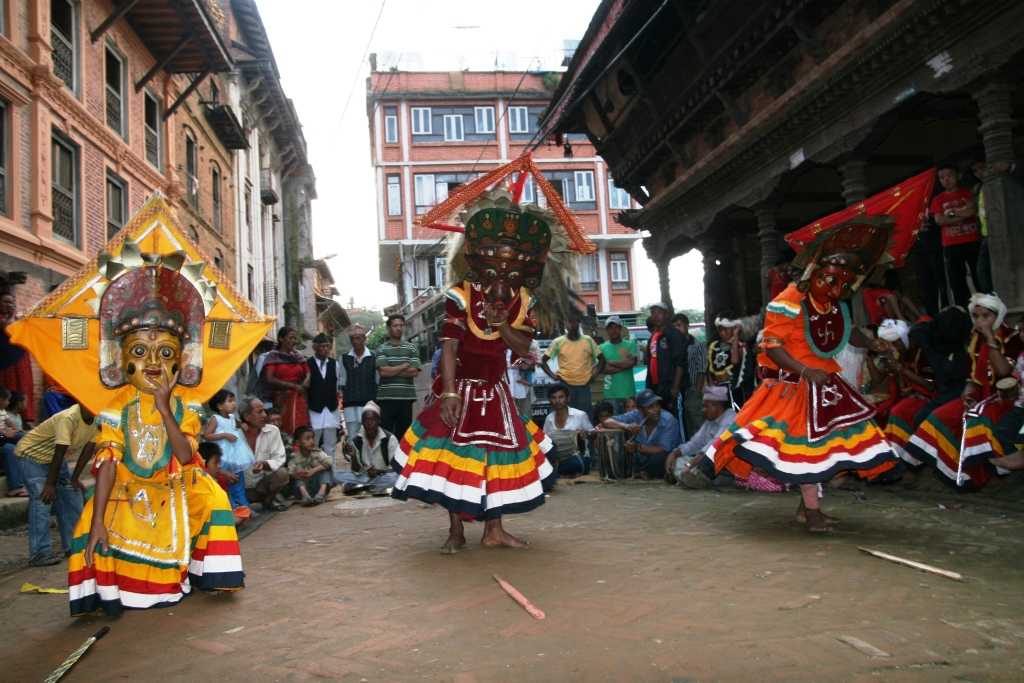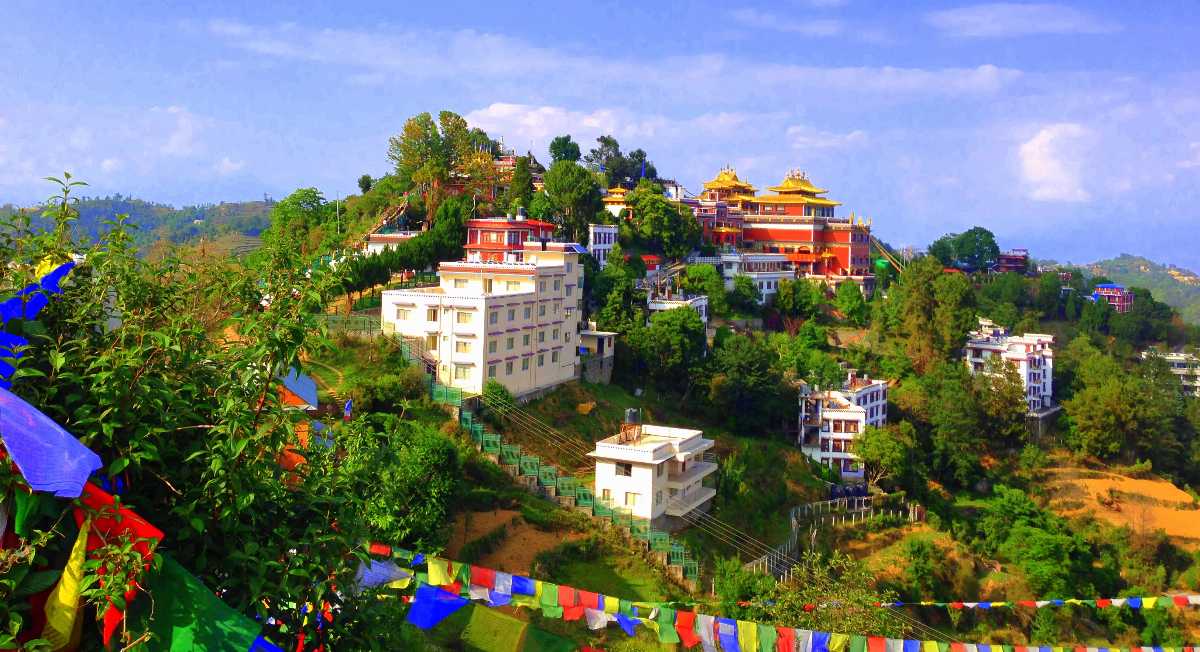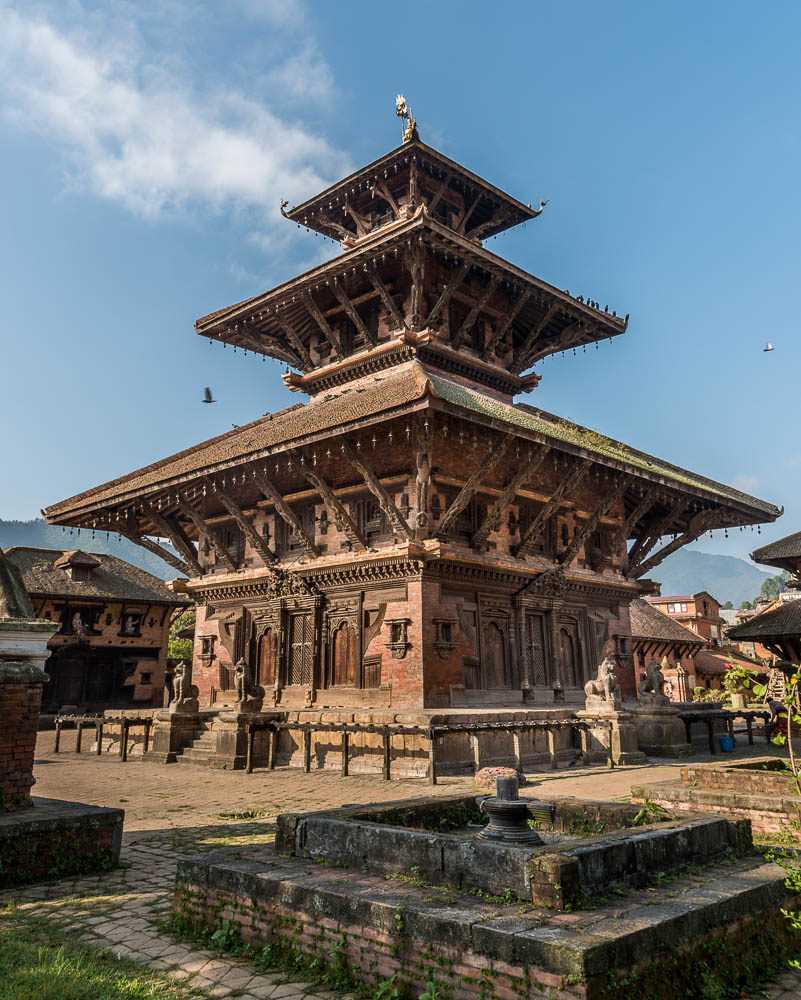Panauti, Nepal Overview
Located some 32 kilometres away from the capital Kathmandu, Panauti is a leftover reminiscence of a time long bygone. The word ''Panauti' in Hindi means 'unlucky', and for some reason unknown, it sits perfectly well with the historical background of this medieval city. At one glance, the town of Panauti is a melancholic chock-a-block of wooden houses, public halls, temples and shops, all nestled together resembling the shape of a fish in the laps of Himalayan greenery. Though still dotted with enough places worth mentioning, there is a feeling of decay spread all across the once prosperous town.
On the north-east of the town lies the peak of Goraknath Hill at 2000 ft, from where a breathtaking panoramic view of this ancient town can be seen. There are occasional courtyards or public squares as well, but you will not see a throng of tourists loitering around in this town. Unlike Kathmandu, the streets of Panauti are still safe from the excessive encroachment of the travelling kind, and probably that is why it still retains much of its antique charms in the wooden buildings and the laid-back vibe around the town.
Read More on Panauti
History - A City of Prosperity

The Indreshwar Temple in Durbar Square has stood there since the inception of Panauti. The town was originally a marriage gift to the sister by King Bhupatindra Malla, though there are other origin stories among the local folklore as well. There is supposedly a golden scripture inside the Indreshwar Temple dating back to 1385, which mentions King Harisingh Dev as the founder of the town.
Nevertheless, the quaint town of today was once a bustling trading hub during the era of the kings and the queens. Though initially founded as a separate town, it was later brought under the unified kingdom of Nepal, as the resident ethnicity of Newars grew stronger and more influential.
Even long before that, the area of Panauti was an essential stop along the ancient Salt Trade route between India and Tibet. With modernisation came the building of highways and bypasses, and the commercial importance of Panauti faded gradually. However, its former glory is survived by a string of temples and a vibe of festivity that not even centuries could uproot from Panauti.
Dances of Panauti

The main ethnic culture of Panauti is of the Newaris, which is spread over the bigger cities of Bhaktapur, Patan and Kathmandu. Their traditions and centuries old, and one of the most popular ones is the masked dance in devotion to multiple gods and goddesses. The earliest one is the Harisiddhi dance, done for the goddess Shakti. Another one is Nava Durga dance, whose preparations begin as early as June, by burning the old masks and throwing them into the holy river.
These dances are part of the age-old culture of Panauti and are performed religiously, amidst a crowd of interested onlookers, in the Durbar Square of the town and other parts of the Kathmandu Valley area as well.
So, if the mountains call you every once in a few months, take the road less travelled and try out this charmingly offbeat location in the laps of the Himalayas.
Hike to Namo Buddha - Hiking Up the Path of Spirituality

The trekking route from Panauti to the colourful fluttering flags of Namo Buddha can be a charming addition to a Panauti trip. Located at 1750 metres above mean sea level, the uphill walk to the monastery takes not more than 45 minutes to one hour, depending on your speed and how many times you stop. While the monastery, the scintillating wall carvings and embellishments and hundreds of loitering monks of all age make Namo Buddha a must-visit, the hike itself is no less.
Hikers get to see vast expanses of lush green paddy if they are travelling just before the season of harvest. Otherwise, they can see farmers toil in the fields. There are many orchards as well, especially quite a few orange trees along the road. It might get hot by the time you reach Namo Buddha, but the ambience of the monastery and the chilling view of the valley and the winding roads from up there is absolutely worth it.
Attractions in Panauti - A Town Dipped in History and Culture
Panauti, though long waiting in the queue of becoming a UNESCO site since 1996, has its own, self-declared appeal to the locals. And the same will undoubtedly mesmerise you as well if you happen to pass by the town or stay a couple of nights. Panauti stands on the confluence of the two rivers Rosi and Punyamati, and thus by default qualifies as a site of holy pilgrimage. Legend tells us about another, quite invisible a stream called Lilawati, that can only be seen by the wise and the enlightened. Together, they form a trident near Panauti which is named as Triveni. Like all great river confluences in Oriental culture, this too is considered as a holy convergence, and devotees take dips in this prayag to wash away all their sins of this lifetime.

The non-existent, invisible part of this trident, the Lilawati River, is said to have originated from the Indreshwar Temple, located in Durbar Square. While the bottom two floors are adorned with intricate wood carvings, native to any Nepalese shrine, the top floor has endless bunches of hanging pots and pans - offerings from newly-wed couples hoping for a happy and everlasting marriage. Dedicated to Lord Shiva, the temple reflects the true essence of Newari culture and architecture in its three wooden storeys. Newars are the original descendants of the mountainous country, and their ancestors are said to have been there since civilisation started in the Kathmandu Valley.
Holding a close resemblance to the Buddhist Pagoda, but worshipping a Hindu god in its shrine, the age-old temple is a perfect embodiment of what the culture of Nepal looks like. Though scholars have dated the Indreshwar Temple back to the very late 13th century, it still stands tall and magnificent and is perhaps the most popular site in Panauti.
Other than the shrine itself, there is also a museum, a king's palace and some other excavated brick and mortar structures scattered all across the Durbar Square, and there are some more still hidden under the earth somewhere, waiting to be dug out and explored. There is an entry fee of INR 300 for the entire place.
Festivals in Panauti - The Town of 28 Festivals
Staying true to its roots, the town of Panauti celebrates as many as 28 festivals - some on a monthly basis, while some only once in 12 years.
_20181010204918.jpg)
Source
Panauti Jatra: Nepal's very own chariot festival Panauti Yatra, or Jya Punhi, as they call it, is a three-day festivity that ends with deafening cheers from the devotees at the bank of Punyamati. Chariots from the many temples all across the town start their journey from the Durbar Square, in front of Indreshwar Temple, and meet at the river bank. This is one of Nepal's major festivals every year during May-June and is embedded in their very culture.
Triveni Ghat and Makar Mela: We come back to the holy confluence of the two real and one mythological river - Rosi, Punyamati and Lilawati. This place has more than a dozen or so religious sites, dedicated to different gods and goddesses. The 17th century Brahmayani Temple and the Krishna Narayan Temple are among the more prominent ones. As a result, the Triveni Ghat is one of the few places which always remain crowded with believers and worshippers.
However, once in every 12 years, the holy site of pilgrimage hosts the grand Makar Mela. For more than one occasion, devotees take a dip in the tri-junction for spiritual cleansing. Since the Makar Mekla festivals happen literally once in a blue moon, the place is gatecrashed by a huge multitude, all looking forward to sanctity in the sacred water.
Namobuddha festival: This revered festival of the Buddhists, also celebrated with equal fervour by the Hindus, commemorates the great Prince Mahasatwo, who was born in Panauti and sacrificed his mortal body to feed a starving tiger and her little cubs. The festival is held city-wide, but mainly at the Namobuddha Monastery in the fringes of Panauti.
Nepal Reviews

Have a Question on ?

experience.